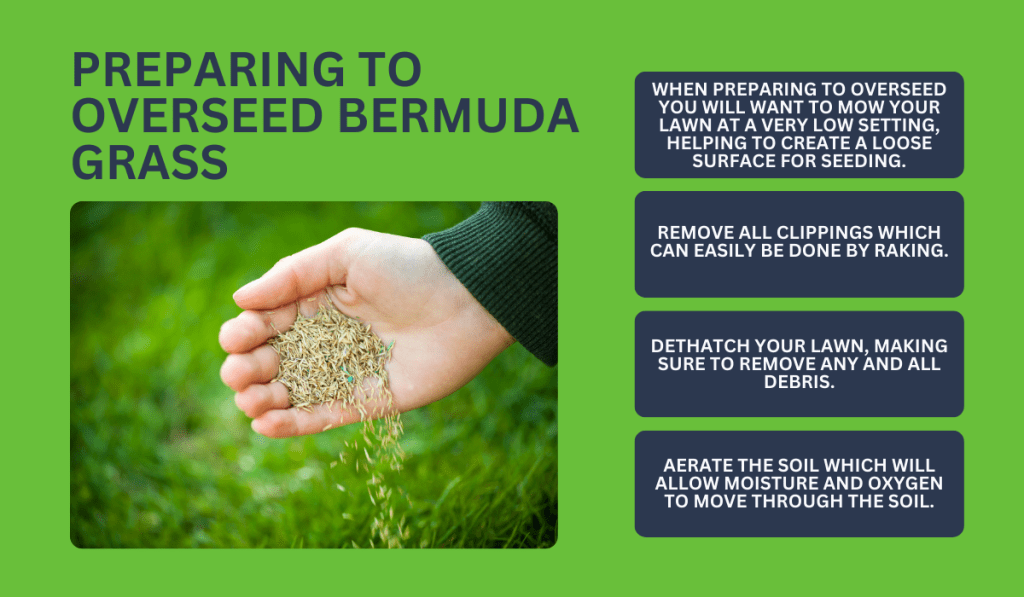Overseeding Bermuda Grass With Ryegrass
Most Bermuda grasses will go dormant (turn brown) during winter months. The most common seed variety used to overseed Bermuda, a warm season grass, is ryegrass, which is a cool season grass. Perennial ryegrass is dark green, does excellent in full sun, tolerates high traffic well, is stress and pest tolerant, and germinates quickly.
When to Overseed Bermuda Grass
October is a great month to overseed as the Bermuda is slowing its growth rate but the weather is typically still warm enough for the ryegrass seed to germinate.
Daytime temperatures should not be above 70 degrees and nighttime temperatures should not reach above 50 degrees. This usually falls two to four weeks before the first frost of winter. You can also tell it may be time to overseed when your lawn is starting to thin but is still in good condition.
Preparing to Overseed Bermuda Grass

- When preparing to overseed you will want to mow your lawn at a very low setting, helping to create a loose surface for seeding.
- Remove all clippings which can easily be done by raking.
- Dethatch your lawn, making sure to remove any and all debris.
- Aerate the soil which will allow moisture and oxygen to move through the soil.
Overseeding
- Spread the seed throughout the lawn using a hand spreader, making sure you apply it evenly and thoroughly.
- If there are bare areas in your sod you can spread the seed again in that area.
- Rake and lightly roll the soil in order to cover the seed up to 1/8″.
- Fertilize when overseeding and water well until the overseeded grass is well established, while also being sure not to leave any standing water.
Maintenance
Continue to maintain your sod lawn throughout the winter with proper water, mowing, and fertilization.
It is important to correctly manage your lawn in the spring when Bermuda (warm season) grass is coming out of dormancy. The ryegrass (cool season grass) can compete for moisture, sunlight, and nutrients.
It is important to stop fertilizing in early spring but to continue once the Bermuda has established itself again. Maintaining a proper low mowing height as the Bermuda grass re-establishes will stress the ryegrass, or cool-season turf, aiding in the Bermuda grass growth.
Maintaining your sod lawn throughout the year, especially during overseeding in the fall and the establishment of your warm season grass in the spring, is vital to the overall health of your lawn.
Disease and inability of the Bermuda grass to establish without struggle will be more likely if there is not proper maintenance year round. With a little time and effort, it is possible to transition smoothly from warm season Bermuda grasses to cool season ryegrasses and have a green lawn year round.



